
Margaret Mary Emily Anne Hyra, known professionally as Meg Ryan, is an American actress and filmmaker. Known for her leading roles as quirky, charismatic women since the late 1980s, Ryan is particularly recognized for her work in romantic comedies, a genre she dominated during the 1980s and 1990s. Dubbed "America's sweetheart" by the media, she became one of Hollywood's most bankable stars of the latter decade.

The Piano is a 1993 historical drama film written and directed by Jane Campion. It stars Holly Hunter, Harvey Keitel, Sam Neill, and Anna Paquin in her first major acting role. The film focuses on a mute Scottish woman who travels to a remote part of New Zealand with her young daughter after her arranged marriage to a frontiersman.

William James "Willem" Dafoe is an American actor. Known for his prolific career portraying diverse roles in both mainstream and arthouse films, he is the recipient of various accolades, including the Volpi Cup for Best Actor as well as nominations for four Academy Awards, a BAFTA Award, and four Golden Globe Awards. He has frequently collaborated with filmmakers Paul Schrader, Abel Ferrara, Lars von Trier, Julian Schnabel, Wes Anderson, and Robert Eggers. Dafoe was a founding member of experimental theater company The Wooster Group.
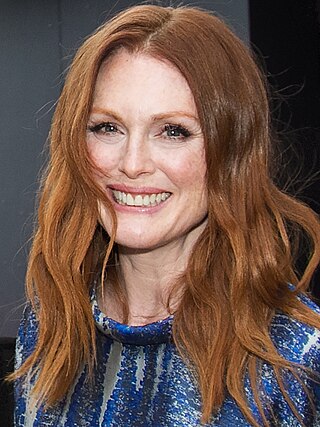
Julie Anne Smith, known professionally as Julianne Moore, is an American actress. Prolific in film since the early 1990s, she is particularly known for her portrayals of emotionally troubled women in independent films, as well as for her roles in blockbusters. She is the recipient of numerous accolades, including an Academy Award, a BAFTA Award, two Golden Globe Awards, and two Emmy Awards.
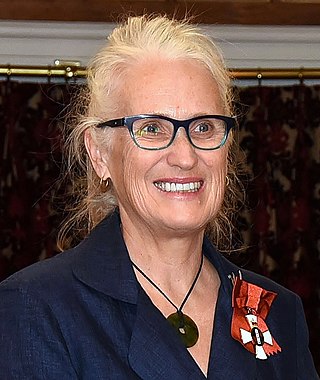
Dame Elizabeth Jane Campion is a New Zealand filmmaker. She is best known for writing and directing the critically acclaimed films The Piano (1993) and The Power of the Dog (2021), for which she has received two Academy Awards, two BAFTA Awards, and two Golden Globe Awards. Campion was appointed a Dame Companion of the New Zealand Order of Merit (DNZM) in the 2016 New Year Honours, for services to film.

Jason Statham is an English actor and martial artist. He is known for portraying characters in various action-thriller films who are typically tough, gritty, or violent. Statham has been credited for leading the resurgence of action films during the 2000s and 2010s. His film career through 2017 generated over $1.5 billion in ticket sales, making him one of the film industry's most bankable stars.

Mark Alan Ruffalo is an American actor. He began acting in the early 1990s and first gained recognition for his work in Kenneth Lonergan's play This Is Our Youth (1996) and drama film You Can Count on Me (2000). He went on to star in the romantic comedies 13 Going on 30 (2004), Just like Heaven (2005) and the thrillers In the Cut (2003), Zodiac (2007), and Shutter Island (2010). He received a Tony Award nomination for his supporting role in the Broadway revival of Awake and Sing! in 2006. Ruffalo gained international recognition for playing Bruce Banner / Hulk since 2012 in the superhero franchise of the Marvel Cinematic Universe.
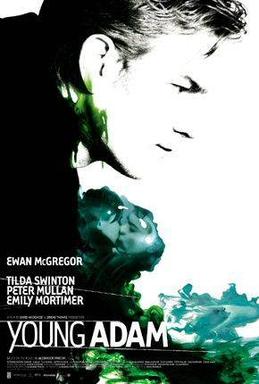
Young Adam is a 2003 British erotic drama film written and directed by David Mackenzie and starring Ewan McGregor, Tilda Swinton, Peter Mullan, Ewan Stewart and Emily Mortimer. The film is based on the 1954 novel of the same name by Alexander Trocchi.

A Talking Picture is a 2003 Portuguese drama film written and directed by Manoel de Oliveira and starring Catherine Deneuve, John Malkovich, Irene Papas, Stefania Sandrelli and Leonor Silveira. This was Irene Papas’ final film before her death in 2022.
Manohla June Dargis is an American film critic. She is the chief film critic for The New York Times. She is a five-time finalist for the Pulitzer Prize for Criticism.

Jade is a 1995 American erotic thriller film written by Joe Eszterhas, produced by Robert Evans, directed by William Friedkin, and starring David Caruso, Linda Fiorentino, Chazz Palminteri, Richard Crenna, and Michael Biehn. The original music score was composed by James Horner based on a song composed by Loreena McKennitt. The film was marketed with the tagline "Some fantasies go too far."

Interview with the Assassin is a 2002 drama/pseudo-documentary directed by Neil Burger and starring Raymond J. Barry and Dylan Haggerty.

Sliver is a 1993 American erotic thriller film starring Sharon Stone, William Baldwin, and Tom Berenger. It is based on the Ira Levin novel of the same name about the mysterious occurrences in a privately owned New York high-rise sliver building. Phillip Noyce directed the film, from a screenplay by Joe Eszterhas. Because of a major battle with the MPAA, the filmmakers were forced to make extensive reshoots before release. These reshoots actually necessitated changing the killer's identity.

Happy-Go-Lucky is a 2008 British comedy-drama film written and directed by Mike Leigh. The screenplay focuses on a cheerful and optimistic primary school teacher and her relationships with those around her. The film was well received by critics and resulted in a number of awards for Mike Leigh's direction and screenplay, lead actress Sally Hawkins's performance, and Eddie Marsan's performance in a supporting role.
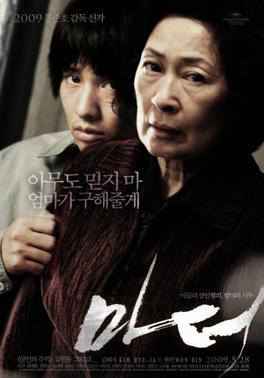
Mother is a 2009 South Korean neo-noir thriller film directed by Bong Joon-ho, starring Kim Hye-ja and Won Bin. The plot follows a mother who, after her intellectually disabled son is accused of the murder of a young girl, attempts to find the true killer to get her son freed.

White Material is a 2009 French drama film directed by Claire Denis and co-written with Marie NDiaye.

The Yellow Sea is a 2010 South Korean action thriller film directed by Na Hong-jin and starring Ha Jung-woo and Kim Yoon-seok in the lead roles. This film marks the reunion of the director and the lead actors who also first collaborated for the 2008 film The Chaser, in which Ha Jung-woo played the antagonist and Kim Yoon-seok played the protagonist. In The Yellow Sea, Ha Jung-woo plays the protagonist while Kim Yoon-seok plays the antagonist.
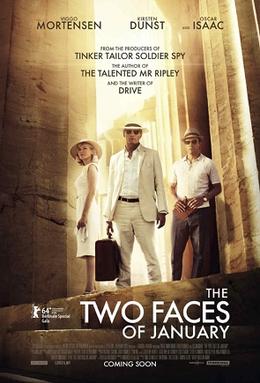
The Two Faces of January is a 2014 thriller film written and directed by Hossein Amini, in his feature film directorial debut. It is based on Patricia Highsmith's 1964 novel The Two Faces of January and stars Viggo Mortensen, Kirsten Dunst and Oscar Isaac.

The Girl in the Spider's Web is a 2018 action-thriller film directed by Fede Álvarez, who co-wrote with Jay Basu and Steven Knight, and based on the 2015 novel of the same name by David Lagercrantz, which in turn is based on characters in the Millennium book series by Stieg Larsson. The film acts as a soft-reboot/sequel to The Girl with the Dragon Tattoo. It stars Claire Foy in the role of Lisbeth Salander, and follows Salander as she battles against a mysterious notorious organization, the Spiders, who seek world dominance. Sverrir Gudnason, Lakeith Stanfield, Sylvia Hoeks, and Stephen Merchant also appear in the film.

In the Cut is a 1995 thriller novel by American writer Susanna Moore. The plot follows an English teacher at New York University who becomes entangled in a sexual relationship with a detective investigating a series of gruesome murders in her neighborhood. The novel was adapted into a feature film of the same name in 2003 by director Jane Campion.



















